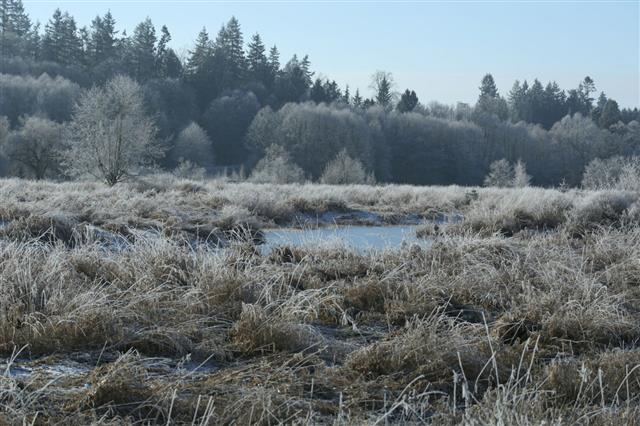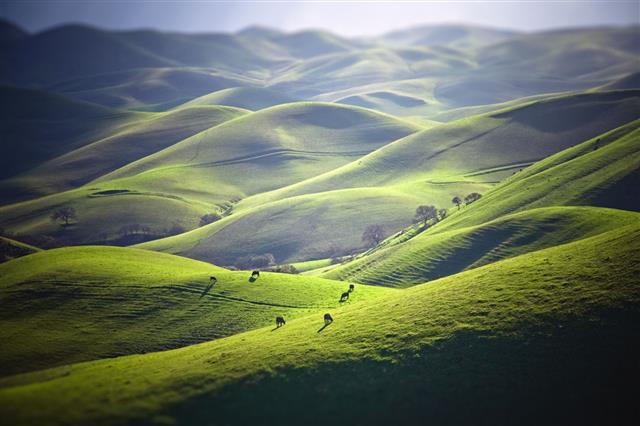
Greenhouse effect and global warming are terms that children must be listening everyday in the school, news, books, etc., but may not be knowing their actual meaning and their effects. Therefore, especially for kids, the following article explains the greenhouse effect in a simple manner.
As we know, a greenhouse is a small glass house employed to grow plants, especially in winter. The glass panels of this structure trap heat from the sun, and prevent it from escaping, hence keeping the plants warm enough to survive in the winter. Similarly, when the sun’s rays travel through the Earth’s atmosphere, which is made up of several layers of gases, and reach our planet, the surface, i.e., land, water, and biosphere, absorbs the solar energy.
Gases like water vapor, carbon dioxide, nitrous oxide, methane, and ozone, which are present in the atmosphere, trap energy from the sun, and prevent the heat from escaping back into space. Though some of the energy passes back into space, most of it remains trapped in the atmosphere, which causes the Earth to heat up. These are known as greenhouse gases, and this natural process of maintaining the average temperature of our planet, and keeping it warm, is known as the greenhouse effect, as it works in the same way as a greenhouse.
Causes
Along with the natural greenhouse gases, there are some man-made ones that keep on increasing in the atmosphere. Some causes involve human activities like burning of fossil fuels (coal, oil, and natural gas), cutting down and burning trees, etc. These generate a lot of carbon dioxide, due to which the balance of greenhouse gases in the atmosphere gets disturbed.
Use of aerosols, hairspray cans, fridges, plastics, etc., produces a group of highly dangerous gases called chlorofluorocarbons and hydro-fluorocarbons. These are so harmful that even small amounts can trap large quantities of heat, making the Earth extremely hot. This phenomenon is known as global warming, which has a highly dangerous effect on our planet.
Consequences
As more heat gets trapped in the Earth, the surface will become extremely warm, which will in turn, will lead to weather changes throughout the world. Since the climatic conditions in which we are living are perfect for our survival, any more increase in temperature can cause drastic changes, which can be life-threatening for all living beings on the planet.
- Weather: In some parts of the world, due to rise in the winter and summer temperatures, the weather will become very hot. It may rain more in winters, while summers will become extremely hot. In other parts of the world, the effects may be completely opposite, as some areas may get very warm, while other may become very cold. Storms, floods, and droughts are some expected consequences, which may affect different areas of the world.
- Sea Levels: Increase in the temperature may cause melting glaciers, which will increase the water in the seas and oceans, and lead to a rise in the sea levels up to 20 to 40 cm all over the world. People living near the lower coastal areas of the world like Netherlands and Bangladesh will be at a higher risk from flooding. As a result, millions may have to leave their homes, and large areas of farmland may get destroyed.
- Farming: The changes in the weather may also cause alterations in the amount of rainfall in different parts of the world. Some places may get heavy rains, while in other places, it may not rain at all. Hence, this will affect the crop growth throughout the world, as plants like wheat and rice grow well in higher temperatures, whereas those like corn and sugarcane may not grow. Therefore, there will be scarcity of food in few parts of the world, and people will suffer from hunger.
- Plants and Animals: Due to these weather and temperature changes, many organisms will not be able to cope up, and will die eventually. For example, polar bears and seals will have to search for new homes for hunting and living, if the ice in the Arctic melts. Since natural habitats of plants and animals will get affected, most species may become extinct.
- People: Last but not the least, these weather changes will also bring unwanted changes in our lifestyle. The consequences of these climatic variations on human beings depend on how well we adapt ourselves to the changes, and how much we can do to minimize them.
However, by controlling the amount of air pollution by efficient utilization of our energy resources, and also by recycling used materials, we can significantly reduce the contribution to the generation of greenhouse gases, ultimately leading to climatic changes and global warming.












